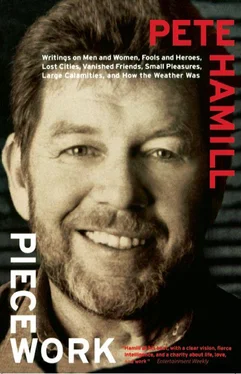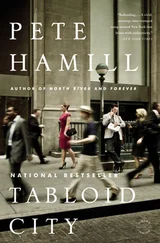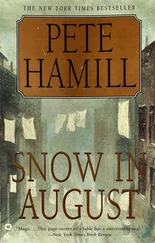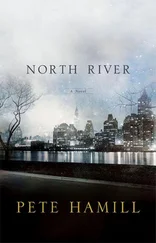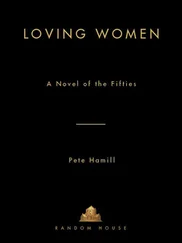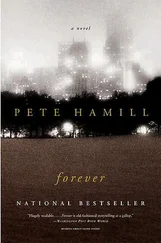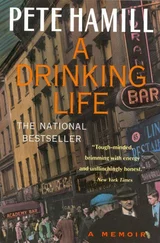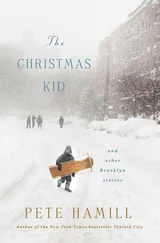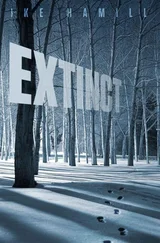Pete Hamill - Piecework
Здесь есть возможность читать онлайн «Pete Hamill - Piecework» весь текст электронной книги совершенно бесплатно (целиком полную версию без сокращений). В некоторых случаях можно слушать аудио, скачать через торрент в формате fb2 и присутствует краткое содержание. Год выпуска: 2009, ISBN: 2009, Издательство: Little, Brown and Company, Жанр: Современная проза, Публицистика, на английском языке. Описание произведения, (предисловие) а так же отзывы посетителей доступны на портале библиотеки ЛибКат.
- Название:Piecework
- Автор:
- Издательство:Little, Brown and Company
- Жанр:
- Год:2009
- ISBN:9780316082952
- Рейтинг книги:5 / 5. Голосов: 1
-
Избранное:Добавить в избранное
- Отзывы:
-
Ваша оценка:
- 100
- 1
- 2
- 3
- 4
- 5
Piecework: краткое содержание, описание и аннотация
Предлагаем к чтению аннотацию, описание, краткое содержание или предисловие (зависит от того, что написал сам автор книги «Piecework»). Если вы не нашли необходимую информацию о книге — напишите в комментариях, мы постараемся отыскать её.
offers sharp commentary on diverse subjects, such as American immigration policy toward Mexico, Mike Tyson, television, crack, Northern Ireland and Octavio Paz.
Piecework — читать онлайн бесплатно полную книгу (весь текст) целиком
Ниже представлен текст книги, разбитый по страницам. Система сохранения места последней прочитанной страницы, позволяет с удобством читать онлайн бесплатно книгу «Piecework», без необходимости каждый раз заново искать на чём Вы остановились. Поставьте закладку, и сможете в любой момент перейти на страницу, на которой закончили чтение.
Интервал:
Закладка:
As are so many other things. No young New Yorker can ever go on a summer evening with a girl to listen to free concerts under the stars at Lewisohn Stadium. The young will not pay a dime to ride down Fifth Avenue in a double-decker bus (killed in ’53) or race up Third Avenue on the el, gazing into living rooms out of John Sloan or Edward Hopper, propelled above Clarke’s and Original Joe’s and Manny Wolfs and the High Hat. Once, King Kong himself had assaulted the el and it had survived, with its rusting potbellied stoves in the waiting rooms. But in 1955, the last great el in Manhattan (there were others on Second Avenue, Sixth Avenue, Ninth Avenue) was torn down, vanishing into the Lost City, to be replaced with still another bland arroyo of steel and glass.
On the most basic level, of course, these were simply means of transportation. When better methods were invented, they were replaced. But alas, the double-decker buses were more than just a means of moving people uptown or down; they were also a ride, adding an element of play to the task of going to work. And the el was more than a people-hauling machine; it was at once monument, curse, shelter, frontier, and a roaring example of energy made visible.
Perhaps most stupid of all the stupidities inflicted upon the city in the years after the war was the destruction of the trolley-car system. Every time I see a groaning bus coughing fumes as it lumbers across three traffic lanes, I long for the trolley cars. They were electric and therefore didn’t poison the air. They ran on steel tracks and so were unable to bully their way across other traffic lanes; at the same time, they helped police that traffic, preventing by their implacable presence the infuriating double- and triple-parking that today clots so many of our streets. Some trolleys were chunky, square, steel-and-wood affairs that looked like the Toonerville Trolley in the comics; their geriatric cousins still live in San Francisco and New Orleans. Others were able to remove their side panels in the summertime. In the 1940s, the newest ones were sleek and “streamlined.” And they seemed to go everywhere. Within the limits of my own Brooklyn hamlet, we had eleven separate lines: on Flatbush Avenue, Union Street, Bergen Street, Vanderbilt Avenue, Church Avenue, 9th Street, 15th Street, Fifth Avenue, Seventh Avenue, McDonald Avenue, and, most gloriously, on Coney Island Avenue. The last was “streamlined,” all silver and green, and it carried us from Bartel-Pritchard Square all the way to Coney Island, past row houses and strange chalky neighborhoods, through the last of the Brooklyn vegetable farms and then into an immense brightness, the sudden odor of the sea air and the beach beyond. No wonder that lost baseball team was once called the Trolley Dodgers. No wonder nobody I knew drove a car.
Coney Island is still there, of course. But in the summertime now, the girls don’t dance beside the pool at Oceantide or pick up boys at Raven Hall. There is no line at Mary’s Sandwich Shop. Nobody is at the bar at Scoville’s, where my father and his friends did their drinking, or at McCabe’s, where the younger crowd did theirs. Nobody listens to bands at Feltman’s. You hear no laughter at Steeplechase the Funny Place, nor will you see sailors and squealing girls strapped together into the parachute ride. They’re all dead or gone. I remember being in Coney Island the day that Luna Park burned to the ground. The year was 1944. I was aboy. But there was a sudden stirring on the beach, a movement away from the surf to the boardwalk, and then great clouds of black smoke piling into the cobalt sky. You could hear voices: Luna Park’s on fire. People were running then, and we could hear the sirens of the Fire Department and saw high arcs of water rising in a beautiful way and falling into the flames. Reporters were there and photographers with Speed Graphics, all of them wearing hats with press cards stuck in the rims, just as they did in the movies. We watched for hours, drawn as New Yorkers always are to the unity of disaster, and saw the rides and buildings collapse into black, wet rubble until there was no more Luna Park. The next day, we read all about it in the newspapers, and I felt for the first time that peculiar New York sensation: Something that was once in the world is now gone forever.
There is a photograph by Weegee, taken on V-E Day, 1945, that shows a man working at a newsstand. We can see three daily newspapers: the Journal-American, the World-Telegram, and PM; the magazines are Liberty, Air News, Argosy, Song Parade, American, Judy’s, Crack Detective, Phantom Detective, Cartoon Digest, American Astrology, White’s Radio, Magazine Digest, Popular Science, Mechanix Illustrated, Die Hausfrau, and Die Welt (must’ve been a Yorkville newsstand). We cannot see some other New York dailies that were publishing that year: the Herald Tribune and the Mirror, and in the outer boroughs, the Brooklyn Eagle, the Brooklyn Times-Union, the Bronx Home-News, the Long Island Press, the Long Island Star-Journal. They are now all dead, as is every other publication on that newsstand except Popular Science and American Astrology. It’s one of the saddest photographs I’ve ever seen.
Around the time the newspapers began to die, the older New York started giving way to the new. Television was changing everything. Within a decade of its triumph in the mid-fifties, it killed the nightclubs and supper clubs: the Latin Quarter, the Stork, El Morocco, the Copa, Billy Rose’s Diamond Horseshoe, the Astor Roof, Ben Maksik’s out in Queens, the Elegante in Brooklyn (where I once saw a smashed Judy Garland perform for a roomful of gangsters), the Château Madrid, Sammy’s Bowery Follies (which biographer Herbert Lottman tells us Albert Camus enjoyed so much, on his only trip to New York, that he had A. J. Liebling take him back twice), Nick’s in the Village, Tony Pastor’s, all the West 4th Street strip joints like the Heat Wave (run by Tony Bender), to mention only a few. Lindy’s, made famous by Damon Runyon, wasn’t a nightclub, but it was a night place, full of columnists (the old three-dotters), press agents, gangsters, and show-business people, and it survived into the early sixties. For a while near the end, I worked for the Post outside the place in a radio car with photographer Artie Pomerantz and once saw Walter Winchell do a tap dance on the sidewalk. The old bebop palaces on 52nd Street turned into strip joints (Ah, Lily St Cyr! O, Winnie Garrett! And where is Evelyn West and her Treasure Chest?) and then fell before the developers. Bill Miller’s Riviera, across the North River under the George Washington Bridge, was locked up one morning, then had its doors nailed shut, and was finally torn down. Even Birdland closed. Many of these places were velvet-roped dives, run by wiseguy veterans of the Prohibition wars; to drop into the Copa upon a winter’s eve was to risk an arrest for consorting. Some peddled junk and women; a few provided floating crap games in nearby hotels; they clipped customers, abused or exploited too many of the performers. But they had energy and color and a certain brutal style, and when they vanished, something went out of New York.
But television didn’t just shutter nightclubs. The movie houses began closing, too. In my neighborhood, we had the RKO Prospect, the Venus, the Globe, the 16th Street, the Sanders, the Avon, and the Minerva: all gone. In downtown Brooklyn, the RKO Albee died along with the Fox (where Buddy Holly and Ritchie Valens and the Big Bopper played in the first huge New York rock-and-roll shows), the Brooklyn Paramount and the Duffield and the Terminal up on Fourth Avenue, beside the Long Island Rail Road, where you could see three movies for a half-dollar. Wandering through the souk of the Lower East Side, you could find the Palestine, the Florence, the Ruby, and the Windsor (among many others, most of which were nicknamed The Itch); they, too, died, driven into the Lost City with the great Yiddish theaters: the Grand, the Orpheum, the Yiddish Arts. Out in Queens, around 165th Street, the Loew’s Valencia closed, along with the Alden, the Merrick, the Jamaica, the Savoy, and the Hillside. On East 14th Street in Manhattan, there was a place called the Jefferson, where we went to see the Spanish movies and vaudeville acts, improbably trying to learn the language from Pedro Infante and Jorge Negrete, lusting for Sarita Montiel, laughing at the comedy of Johnny El Men, while ice-cream vendors worked the aisles. Gone. In Times Square, the Capitol disappeared, the Roxy, the Criterion, the Strand. The Laffmovie on 42nd Street played comedies all day long, but now, where Laurel and Hardy once tried to deliver Christmas trees, the movies are about ripped flesh. Who now can verify the existence of the old Pike’s Opera House on 23rd Street and Eighth Avenue (converted first to vaudeville and then to movies after the Metropolitan Opera established itself at 39th Street and Broadway)? It was torn down to make way for the ILGWU houses, thus eradicating the building where Jay Gould once had his office and where Fred Astaire learned to dance. And most astonishing and final of all, the Paramount itself was murdered in its sleep.
Читать дальшеИнтервал:
Закладка:
Похожие книги на «Piecework»
Представляем Вашему вниманию похожие книги на «Piecework» списком для выбора. Мы отобрали схожую по названию и смыслу литературу в надежде предоставить читателям больше вариантов отыскать новые, интересные, ещё непрочитанные произведения.
Обсуждение, отзывы о книге «Piecework» и просто собственные мнения читателей. Оставьте ваши комментарии, напишите, что Вы думаете о произведении, его смысле или главных героях. Укажите что конкретно понравилось, а что нет, и почему Вы так считаете.
